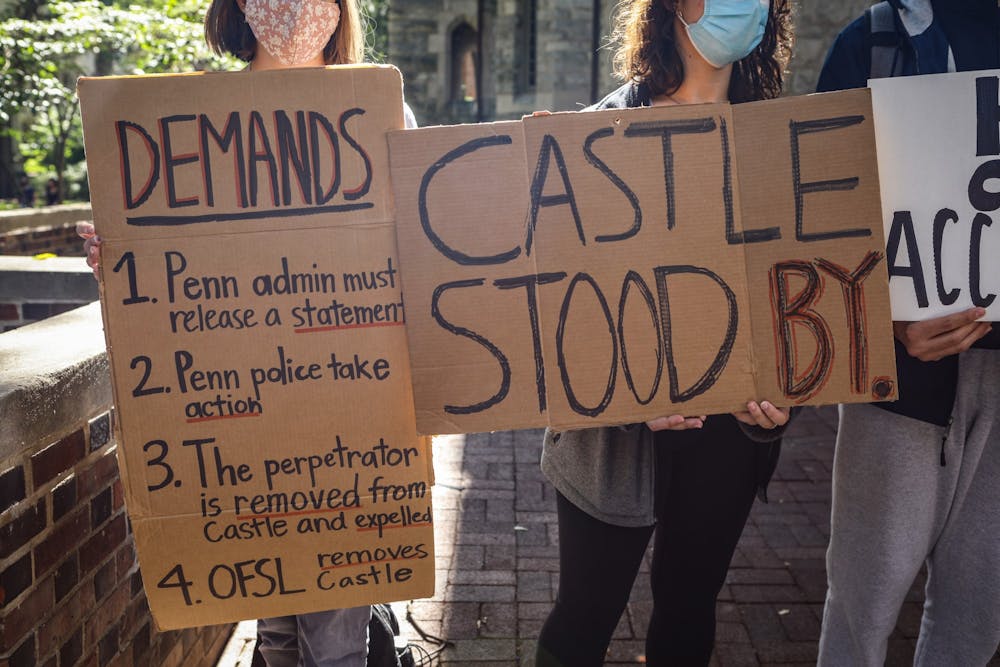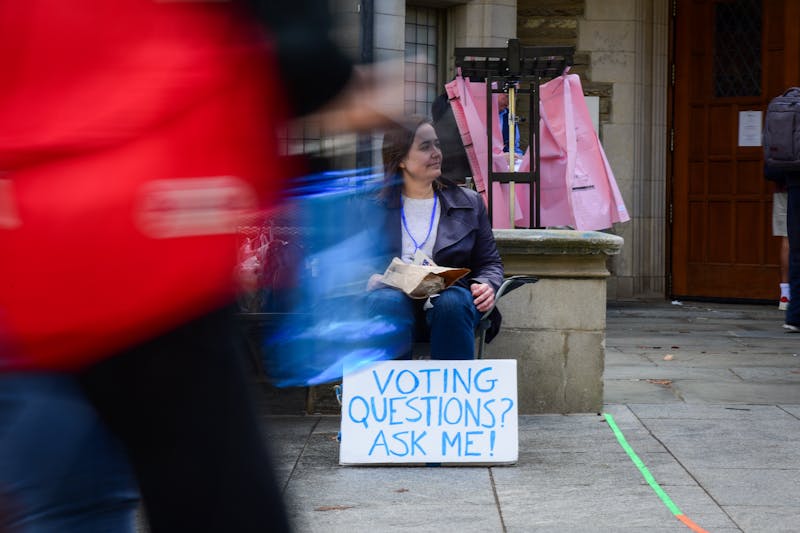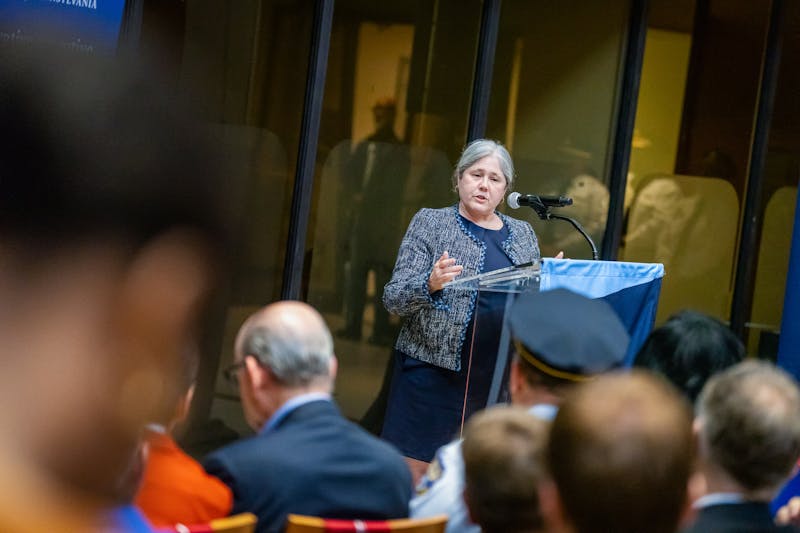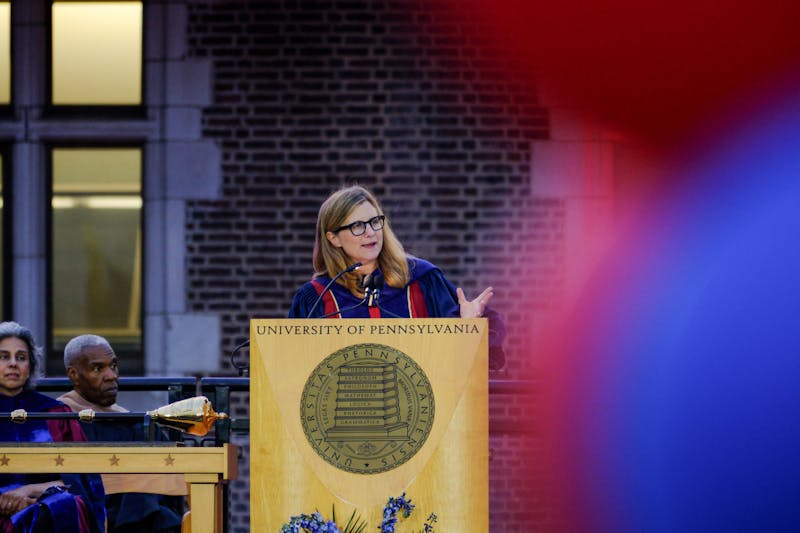
Like many other readers, I was shocked to read about the student who was repeatedly punched by an upperclassman at a Castle fraternity party. How did this happen?
I was most disturbed by the fact that — according to a witness mentioned in the original article — many brothers of the Psi Upsilon fraternity watched the attack without intervening. I would like to commend the bravery of the female College sophomore who tried to stand between the assailant and the victim. Her courage models an example of how Penn students should strive to protect each other.
Although I was not a witness of this horrendous incident, I would like to share my thoughts — from a social psychology perspective — on how this group inaction could have happened. While I am not an expert on bystander intervention, I would also like to suggest a way we can frame peaceful intervention when we see tense situations.
The best rationalization that I can give for the fraternity brothers’ non-intervention is the bystander effect. The bystander effect explains that the more people there are in a space, the less likely a single person will intervene to help someone in distress.
The bystander effect is related to diffusion of responsibility, which explains that we often expect others will intervene, so we ourselves don’t. We may think, “Oh, there are others around, so I don’t need to be the one to make a scene.” Unfortunately, diffusion of responsibility happens every day around Penn’s campus, from scurrying past homeless people to witnessing instances of hazing.
A 2008 scholarly article found that we are more likely to intervene if the potential victim is a friend or someone similar to us in some important way. Unfortunately, intervening may often require involving people we do not personally know or relate to, so what can we do?
We can practice being an active bystander, which I recognize does not come naturally. I remember learning about being an active bystander to prevent interpersonal violence during my New Student Orientation. However, passively watching performative scenarios and actively intervening in the heat of the moment are two different things.
Rather than use the term “active bystander” (which I consider a bit oxymoronic), I prefer to say “active advocate.” As Penn students, many of us are advocates for subjects or causes that we believe in, so it may be beneficial to frame peaceful intervention as a form of social advocacy.
I am passionate about hazing prevention. During my first three in-person semesters at Penn, I frequently witnessed hazing, ranging from people wearing embarrassing outfits to me being asked to trade a condom with a girl by the Compass. Over time, I became frustrated with my lack of taking action. I was diffusing responsibility to others, and the price I paid was my ruminative thoughts about what would have happened if I had intervened.
During the past couple weeks, I have been training myself to be an active advocate. On Sept. 10 at around 8:20 pm, I was sitting at outdoor Shabbat services by Penn Hillel when I witnessed a group of blindfolded girls being shepherded west in a line on Locust Walk. I intuitively excused myself and jumped into action.
My adrenaline kicked into gear. I ran to trail the group as they approached Rodin College House. Many people were outside watching this conga line of blindfolded students, yet no one else was doing anything about it. I recorded a brief video of the scene for evidence, and I reported it to the Office of Student Affairs. I learned that I had forgotten to do the most important thing: identify the group. I would not make the same mistake again.
At around 10:10 pm on Sept. 17, I saw another hazing incident by the Radian terrace. A group of students, dressed in unusual outfits, were completing a scavenger hunt. I asked them what group they were a part of, and they freely gave me this information. I actively intervened by letting them know that they were experiencing hazing. Yet, they did not seem to care, so I let them be after a couple minutes of conversation. I briefly recorded them and reported the incident to OSA.
During both of these incidents, my heart was pounding. It felt uncomfortable and exhilarating to intervene, yet I am proud of what I did. I have fewer regrets because I intervened in order to peacefully advocate for what I believe in: a community that prioritizes belonging without barriers.
Now I pose the question to you: how are you going to practice being an active advocate?
JADEN CLOOBECK is a College senior from Laguna Beach, Calif. studying psychology. He is also the founding chair of Beyond Hazing, Penn’s new hazing prevention awareness student organization. His email address is jaden@sas.upenn.edu.
The Daily Pennsylvanian is an independent, student-run newspaper. Please consider making a donation to support the coverage that shapes the University. Your generosity ensures a future of strong journalism at Penn.
Donate






